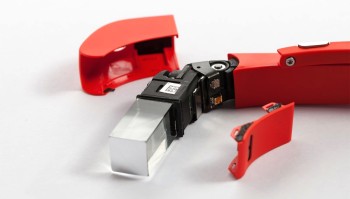
Google could be working on Google Glass 2.0 for a 2014 public release
We know just about everything there is to know about Google Glass. Participants in the Explorer program (including yours truly here at Phandroid), have been playing around with units for months now. At this point there’s only 2 questions still left: when will Glass be available to the masses, and how much will it cost?
While we don’t expect to nail down pricing until right when Glass is officially made available to the general public, it’s been said that Google is currently targeting a 2014 release date for the wearable tech. This will be right around the time when Glass’ own app store is set to go live. Before any of that can happen, it’s clear the Glass team still has their work cutout for them. Build quality issues and battery life are among the chief concerns for Glass wearers. Personally, I’m on my second unit and already in need of another replacement due to a faulty LCD housing.
Google Glass 2.0 to be released in 2014?
In an interview with MIT Technology Review, Mary Lou Jepsen, head of the display division at the Google X Labs alluded to a Google Glass sequel that we might be able to see as early as next year. In the interview, she referred to the current model as a “Ford Model T”, describing it as the first of its kind, comfortable, lightweight, and cool. But according to Jepsen, both the industrial design and user experience “isn’t the whole product.”
“There’s only so much you can do by styling the housing and icons. I think there’s a lot of room for diversity and innovation of approach here.”
Wearable computing and fashion
There was even mention of wearable computing devices like smartwatches (Nexus watch?) and just like the clothes we wear, she emphasized the importance of varied designs if smartwatches hope to become well adopted. Without getting too ahead of ourselves here, you might remember that the now Google-owned Wimm smartwatch featured a module that could, hypothetically, be placed in a variety of watch straps. Just throwing it out there.
We’ve seen Google toying around with the idea of different Glass designs in patent filings, even hints that Samsung could be working on their own version of Glass. It could very well be that Google Glass in its current state is nothing more than a proof of concept. A way of showing OEMs like Samsung and LG that the technology is possible, and to run with it with devices of their own.
Google Glass 1.0 isn’t ready for prime time
One thing is certain, Glass in its current state is still very early. I’d argue that if released tomorrow, the device wouldn’t fare too well with consumers. Not even because of hardware limitations, but simply because Google needs to further condition the general public to believe Glass is “cool”, not awkward and nerdy. Consumers will be much more receptive to Glass if they see it on their favorite movie stars and celebrities, a move Google has already made by making the device available to those with deep pockets.
As far as the future of Glass and smartwatches, Jepsen mentioned that technology like the laptop wasn’t possible until LCD display tech was available, and that the Glass team is working ’round the clock to help “bring the technology forward.” Google Glass contact lenses, anyone?
[via MIT Technology Review]